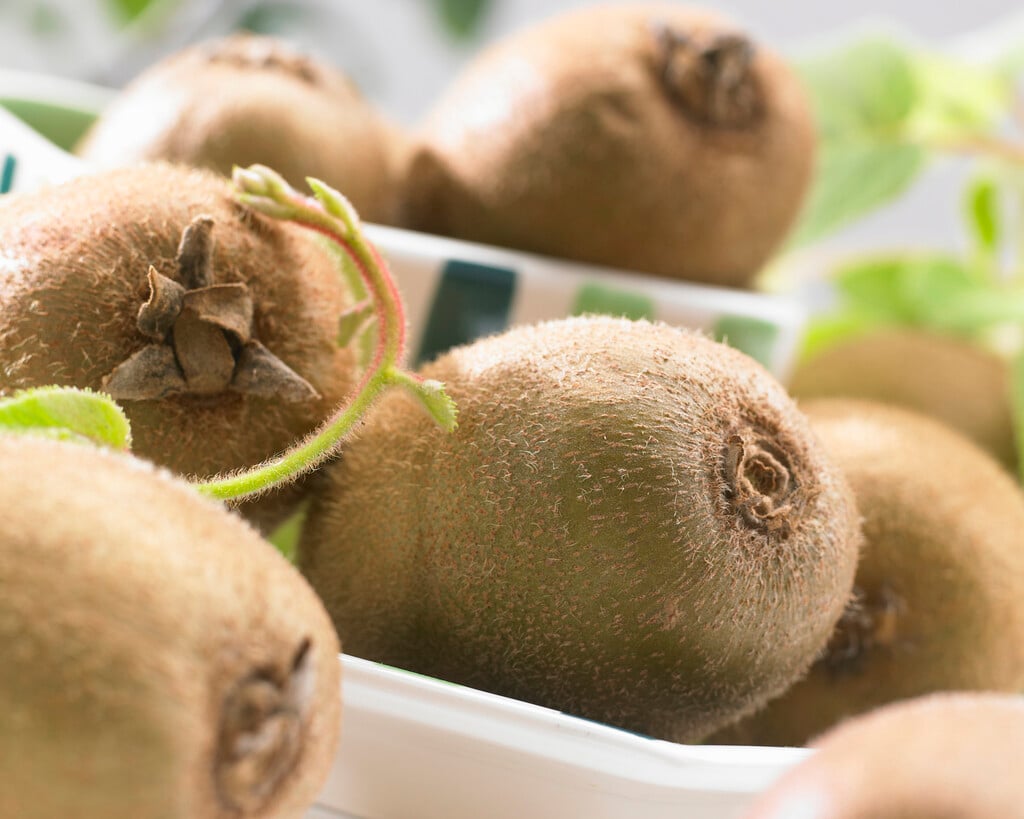Actinidia deliciosa 'Jenny' (s-p/F)
kiwi fruit 'Jenny'
A vigorous, twining, deciduous climber to 6m, with large, heart-shaped, red-tipped, mid-green leaves. Small clusters of white flowers are produced in early summer, followed by hairy, brown, egg-sized fruit in late summer or early autumn. A self-fertile variety that does not need a pollination partner and should fruit within three years of planting
Size
Ultimate height
4–8 metresTime to ultimate height
5–10 yearsUltimate spread
2.5–4 metresGrowing conditions
Moisture
Well–drainedpH
Acid, Alkaline, NeutralColour & scent
| Stem | Flower | Foliage | Fruit | |
| Spring | Green Red | |||
|---|---|---|---|---|
| Summer | White | Green Red | Brown | |
| Autumn | Green Red | Brown | ||
| Winter |
Position
- Full sun
Aspect
South–facing or West–facing
Exposure
Sheltered Hardiness
H4Botanical details
- Family
- Actinidiaceae
- Native to GB / Ireland
- No
- Foliage
- Deciduous
- Habit
- Climbing
- Genus
Actinidia are vigorous, mostly deciduous, twining climbers with simple ovate leaves which are variegated in some species. Small cup-shaped flowers may be followed on female or hermaphrodite plants by edible fruits
- Name status
Accepted
How to grow
Cultivation
Grow in a sheltered site, in fertile, well-drained soil. Prone to late frost and wind scorch damage. See kiwi cultivation for further details
Propagation
Propagate by softwood cuttings taken in the spring or by whip-and-tongue grafting
Suggested planting locations and garden types
- Climber and wall shrubs
- Edible fruit
- Wall side borders
Pruning
When grown for fruit, pruning is carried out in winter and summer. See kiwi fruit pruning and training
Pests
Generally pest-free
Diseases
May be susceptible to honey fungus and phytophthora root rot
Get involved
The Royal Horticultural Society is the UK’s leading gardening charity. We aim to enrich everyone’s life through plants, and make the UK a greener and more beautiful place.
